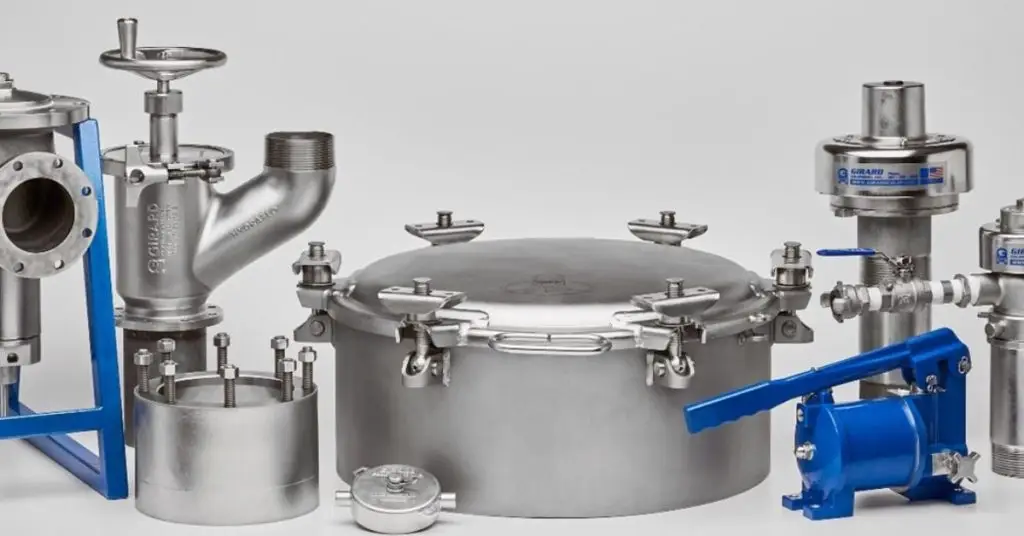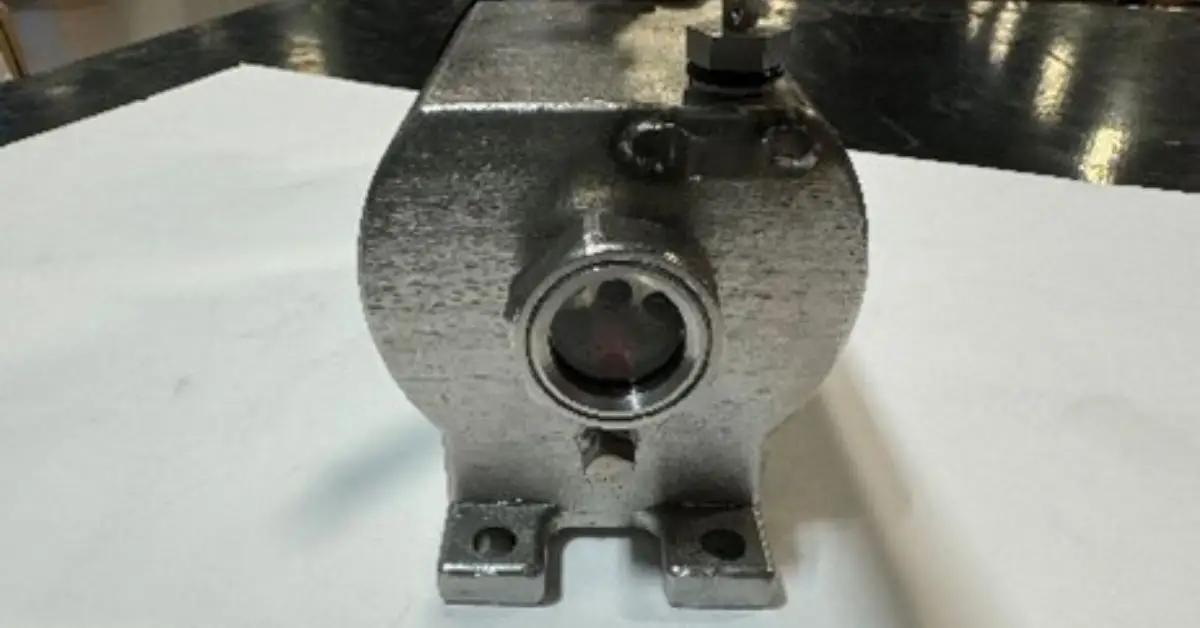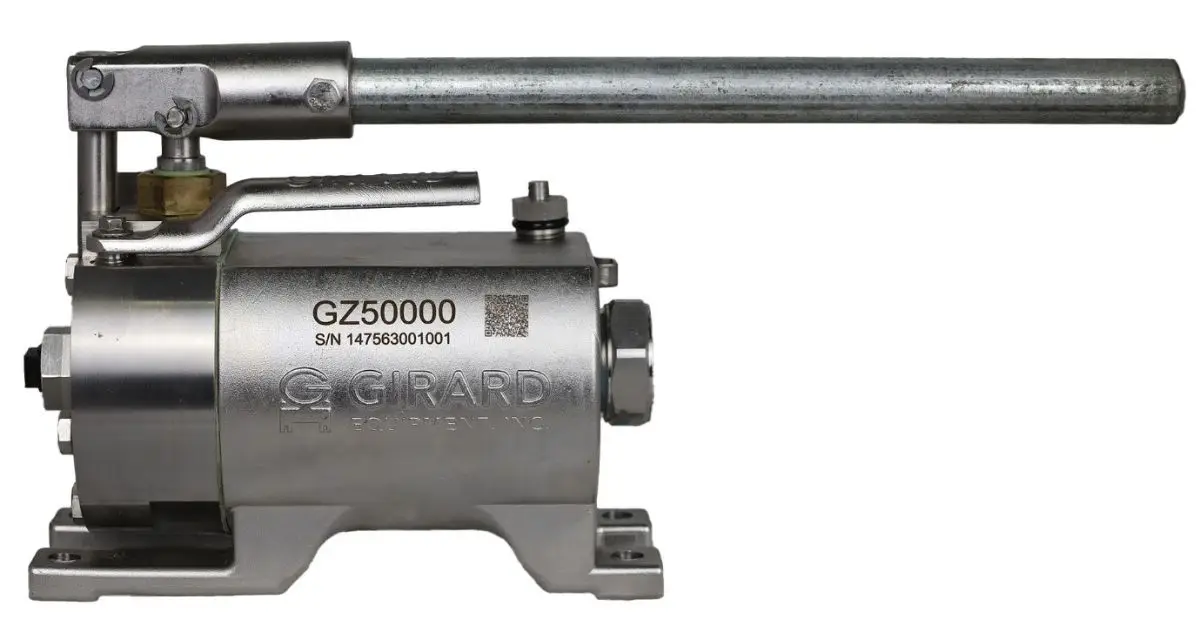Hand-powered hydraulic pumps are essential for remotely actuating Chemical Hydraulic Valves on DOT407 Specification Tanker Trailers. A thorough understanding of these devices is crucial for maintaining a safe work environment, ensuring easy repairs, and prolonging the lifespan of your equipment. This guide provides essential safety tips for operating hydraulic hand pumps with confidence and precision.
Understanding Hand-Powered Hydraulic Pumps
A hydraulic hand pump is a mechanical device that generates hydraulic pressure to open Chemical Hydraulic Discharge Valves. These pumps function by manually pumping a lever, typically into stainless steel piping, to create hydraulic force. This force raises or opens an internal valve seat, allowing liquid to flow. The valve seat must be in the open position during both loading and unloading operations.
The durability and ease of use of hydraulic hand pumps make them an excellent choice for liquid fleet operators handling heavy-duty equipment. However, their effective and safe operation requires proper knowledge and adherence to safety guidelines.
Safety Tips for Operating Hydraulic Hand Pumps
Proper safety procedures are essential to preventing accidents, equipment damage, and potential injuries. We’ll discuss some important safety tips for operating hydraulic hand pumps.
Inspect the Jack Before Use
Before each use, conduct a thorough visual inspection of the pump. Check for visible cracks, leaks, rust, or any signs of wear and tear. Ensure that all components, including the handle, release valve, and hydraulic cylinder, are functioning properly, as even minor damage can compromise the pump’s performance.
Read the Manufacturer’s Manual
Understanding the manufacturer’s guidelines is equally important. Since each pump model has unique specifications, reading the manual provides critical information on best practices, safety features, weight limits, and maintenance requirements.
Use the Correct Jack for the Job
Another key safety measure is using the correct pump for the task at hand. The selected pump must be capable of handling the required weight and size. Overloading a pump beyond its rated capacity is a serious hazard that can lead to equipment failure. Always choose a pump that meets or exceeds the necessary weight capacity.
Wear Appropriate Personal Protective Equipment (PPE)
Always wear safety gloves, goggles, and any other necessary protective gear to stay safe while working. This equipment is essential to prevent potential injuries caused by exposure to high-pressure liquid or unexpected leaks. Taking these precautions ensures you can work confidently without risking harm to yourself.
Avoid Overexertion When Pumping
Manually applying excessive force to the system can cause significant damage and may even result in personal injury. To avoid these risks, it is essential to handle the system carefully and with proper technique. Always use steady, controlled motions when operating the lever to ensure safety and maintain the system’s integrity.
Ensure Proper Valve Alignment
Ensure that the Chemical Hydraulic Discharge Valve is appropriately aligned and fully functional before opening or closing it. Take the time to carefully inspect the valve’s position and alignment to avoid potential issues. Improper alignment can result in serious malfunctions or hazardous leaks, posing risks to equipment and safety. Regular checks and maintenance are essential to ensure the valve operates as intended without any complications.
Keep the Operating Area Clear
Maintaining a clean and organized workspace is essential for ensuring safety and efficiency. A tidy area helps to reduce the risk of trips, spills, or accidents that could interfere with the pump and its connections. Keeping your workspace neat can create a safer environment and prevent unnecessary damage or disruptions.
Train Operators Effectively
Ensure that all personnel using the hydraulic hand pump receive proper training before operation. This training should include detailed instructions on operating the pump safely and effectively. It should also cover potential risks associated with its use to ensure that individuals are aware of possible hazards. Additionally, all users must be familiar with emergency procedures to handle unexpected situations confidently and safely.
Operate the Jack Smoothly
Smooth operation of the pump is essential to maintaining control. Avoid abrupt or jerky movements while pumping the handle or releasing pressure. Using steady, controlled motions ensures greater precision and minimizes wear on the pump.
Check Hydraulic Fluid Levels
Another critical step is checking hydraulic fluid levels before each use. The fluid must be at the appropriate level, and only the manufacturer’s recommended type should be used. Using incorrect or contaminated hydraulic fluid can damage the pump’s system. Girard Equipment’s stainless steel pump features a built-in sight gauge, allowing operators to inspect fluid levels with ease.
Handle High-Pressure Systems Cautiously
Hydraulic pressure can pose serious safety risks if not handled properly, so it’s important to stay cautious at all times. Avoid standing directly in front of valves, connections, or fittings while the system is pressurized, as unexpected leaks or bursts can occur. Always prioritize safety by maintaining a safe distance and regularly inspecting equipment for any signs of wear or damage.
Regularly Maintain the Pump
Perform routine maintenance regularly to keep the system running smoothly and safely. This includes tasks such as lubrication, thorough cleaning, and a detailed inspection of seals to identify any signs of wear or damage. Addressing these maintenance needs can prevent potential issues and extend the system’s lifespan.
Release Pressure Safely
Before disconnecting or servicing the pump, ensure that all hydraulic pressure is released. This step is crucial to avoid any unexpected fluid release that could cause harm or damage. Properly releasing the pressure ensures a safer working environment for everyone involved.
Inspect After Use
After completing a task, always clean the pump and inspect it for any signs of wear or damage. Regular maintenance keeps the pump in peak condition for future use. Store it in a secure, dry location to prevent corrosion and deterioration.
Common Mistakes and How to Avoid Them
Even experienced operators can make errors when using hydraulic hand pumps. One of the most common mistakes is neglecting a pre-use inspection, leading to equipment failure at a critical moment. Taking the time to check for defects before starting ensures safe operation.
Another frequent issue is using the wrong hydraulic fluid. Different systems require specific fluids, such as Mobil DTE oil-based hydraulic oil. Some operators use a mixture of Ethylene glycol and water, which is fine if it is clean and checked periodically. Using incompatible or unapproved fluid can cause significant damage to the pump. Ensuring the correct fluid is used will help maintain safety and performance.
Choose Safety and Reliability with Girard Equipment
Proper operation of a hydraulic hand pump is essential for both safety and efficiency. Whether lifting a multi-ton trailer or performing routine maintenance, following best practices will help protect your equipment and those working around it.
At Girard Equipment, we provide high-quality hydraulic hand pumps designed to withstand the rigorous demands of tanker trailer professionals. Explore our selection today and invest in tools built for durability and performance. For more information, contact us at [email protected].



